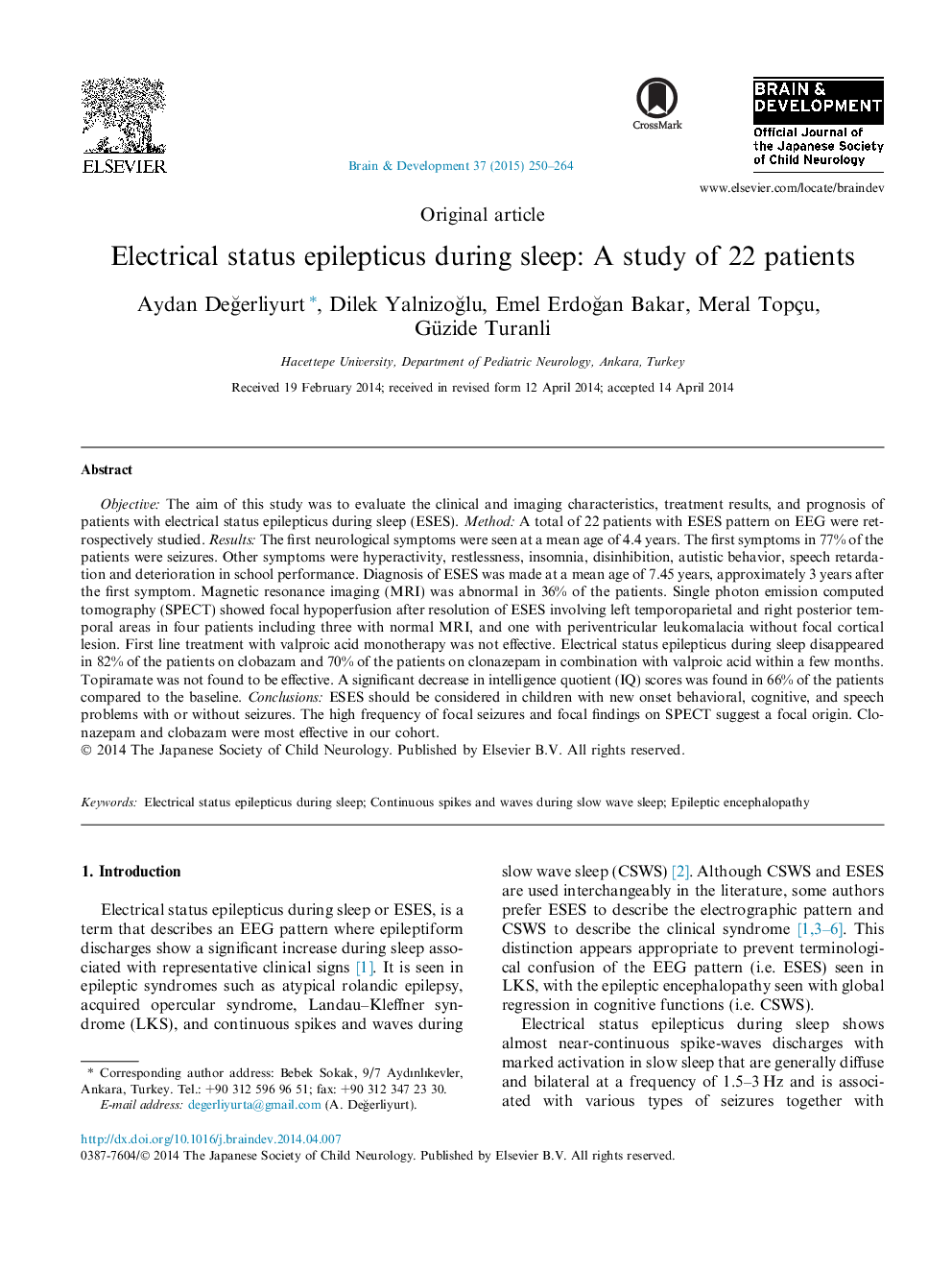| Article ID | Journal | Published Year | Pages | File Type |
|---|---|---|---|---|
| 3036810 | Brain and Development | 2015 | 15 Pages |
Objective: The aim of this study was to evaluate the clinical and imaging characteristics, treatment results, and prognosis of patients with electrical status epilepticus during sleep (ESES). Method: A total of 22 patients with ESES pattern on EEG were retrospectively studied. Results: The first neurological symptoms were seen at a mean age of 4.4 years. The first symptoms in 77% of the patients were seizures. Other symptoms were hyperactivity, restlessness, insomnia, disinhibition, autistic behavior, speech retardation and deterioration in school performance. Diagnosis of ESES was made at a mean age of 7.45 years, approximately 3 years after the first symptom. Magnetic resonance imaging (MRI) was abnormal in 36% of the patients. Single photon emission computed tomography (SPECT) showed focal hypoperfusion after resolution of ESES involving left temporoparietal and right posterior temporal areas in four patients including three with normal MRI, and one with periventricular leukomalacia without focal cortical lesion. First line treatment with valproic acid monotherapy was not effective. Electrical status epilepticus during sleep disappeared in 82% of the patients on clobazam and 70% of the patients on clonazepam in combination with valproic acid within a few months. Topiramate was not found to be effective. A significant decrease in intelligence quotient (IQ) scores was found in 66% of the patients compared to the baseline. Conclusions: ESES should be considered in children with new onset behavioral, cognitive, and speech problems with or without seizures. The high frequency of focal seizures and focal findings on SPECT suggest a focal origin. Clonazepam and clobazam were most effective in our cohort.
